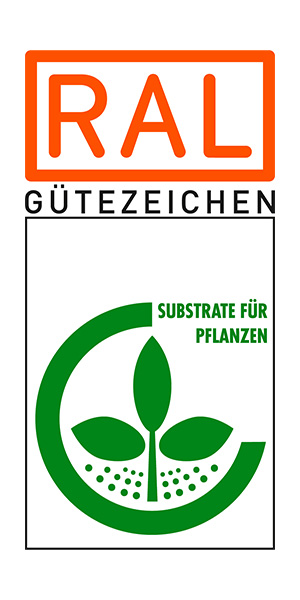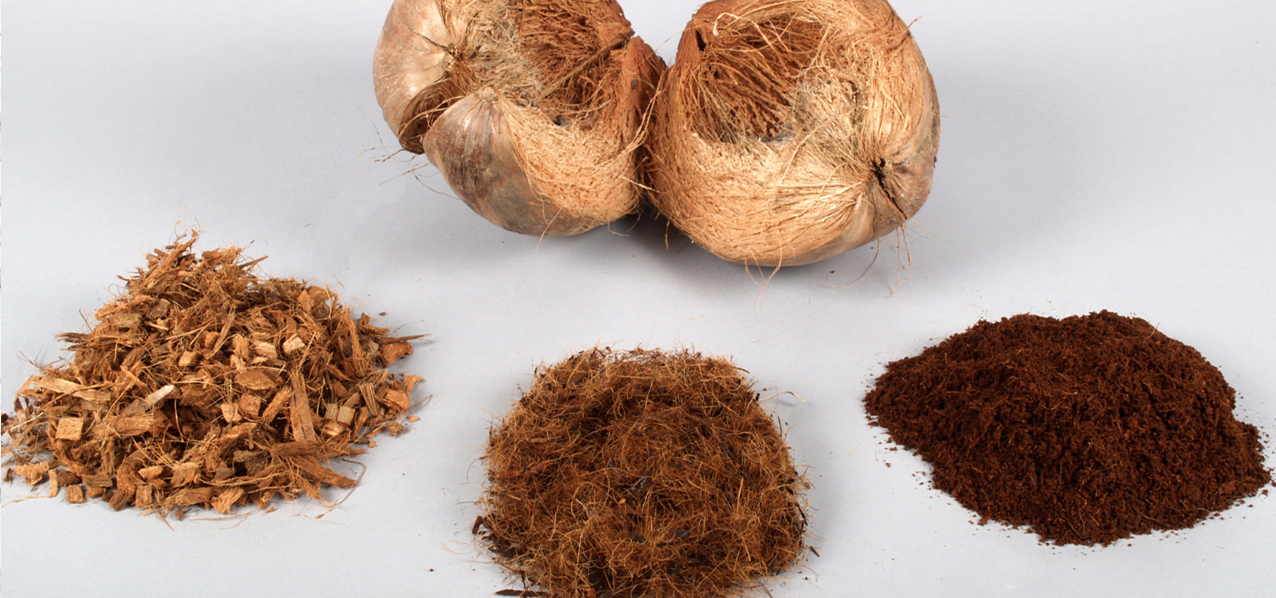quality criteria Coco products
RAL-certified coconut products – constituents for substrate production
Coconut products are increasingly gaining importance as feedstock in German substrate production, because they have a very stable structure and drain well. Plants can even be grown in 100% coco coir if the coco coir quality is high.
Coconut products are mainly imports from India and Sri Lanka. The outer shell of the coconuts (husk; mesocarp) is used as feedstock. This material is a by-product of copra harvesting on coconut plantations. Copra is the white flesh of the coconuts. Fibre mills separate the fibres from the outer shell and process them to make ropes and yarns. Specialised companies use the residues from the separation process (coco pith and short fibres) as feedstock in substrate production. These companies also first crush and then sift the dried husks to make coco chips.
Since 2013, Gütegemeinschaft für Pflanzen e.V. has offered three types of quality assurance for coconut products:
- Coir fibre
(fibrous material from the outer skin, shredded to a variety of defined particle sizes) - Coco pith
(also known as coco peat; the fine material sieved off after obtaining coco fibre) - Coco chips
(coconut shells [mesocarp] cut to a variety of defined particle sizes)
Download quality criteria Coco products
Coco pith must undergo several processes before it can be
marketed as a growing media constituent.
1. Maturing
heap storage for several months. This process enhances the material’s water uptake, enabling the substrate to serve as a buffer. It also improves the material’s structure stability.
2. Washing
coconut palms take up a larger amount of potassium and sodium as they grow. As a result, coconut material has naturally high levels of salt, sodium and chloride. This is why the material is washed in fresh water several times after maturing. Substrate facilities that are subject to RAL Quality Assurance treat washing water efficiently by using it in a circulatory system and reusing it to irrigate plantations.
3. Buffering
using a Ca(NO3)2– solution to replace univalent Na and K ions by bivalent Ca ions. An excessively high concentration of Na and K ions in the coconut material can result in plant damage if the substrate contains a high proportion of coco pith and/or coco fibres.
The material is subsequently dried, sifted and compressed into blocks for shipping.
quality criteria Coco products
RAL-certified coconut products – constituents for substrate production
Coconut products are increasingly gaining importance as feedstock in German substrate production, because they have a very stable structure and drain well. Plants can even be grown in 100% coco coir if the coco coir quality is high.
Coconut products are mainly imports from India and Sri Lanka. The outer shell of the coconuts (husk; mesocarp) is used as feedstock. This material is a by-product of copra harvesting on coconut plantations. Copra is the white flesh of the coconuts. Fibre mills separate the fibres from the outer shell and process them to make ropes and yarns. Specialised companies use the residues from the separation process (coco pith and short fibres) as feedstock in substrate production. These companies also first crush and then sift the dried husks to make coco chips.
Since 2013, Gütegemeinschaft für Pflanzen e.V. has offered three types of quality assurance for coconut products:
- Coir fibre
(fibrous material from the outer skin, shredded to a variety of defined particle sizes) - Coco pith
(also known as coco peat; the fine material sieved off after obtaining coco fibre) - Coco chips
(coconut shells [mesocarp] cut to a variety of defined particle sizes)
Download quality criteria Coco products
Coco pith must undergo several processes before it can be
marketed as a growing media constituent.
1. Maturing
heap storage for several months. This process enhances the material’s water uptake, enabling the substrate to serve as a buffer. It also improves the material’s structure stability.
2. Washing
coconut palms take up a larger amount of potassium and sodium as they grow. As a result, coconut material has naturally high levels of salt, sodium and chloride. This is why the material is washed in fresh water several times after maturing. Substrate facilities that are subject to RAL Quality Assurance treat washing water efficiently by using it in a circulatory system and reusing it to irrigate plantations.
3. Buffering
using a Ca(NO3)2– solution to replace univalent Na and K ions by bivalent Ca ions. An excessively high concentration of Na and K ions in the coconut material can result in plant damage if the substrate contains a high proportion of coco pith and/or coco fibres.
The material is subsequently dried, sifted and compressed into blocks for shipping.




